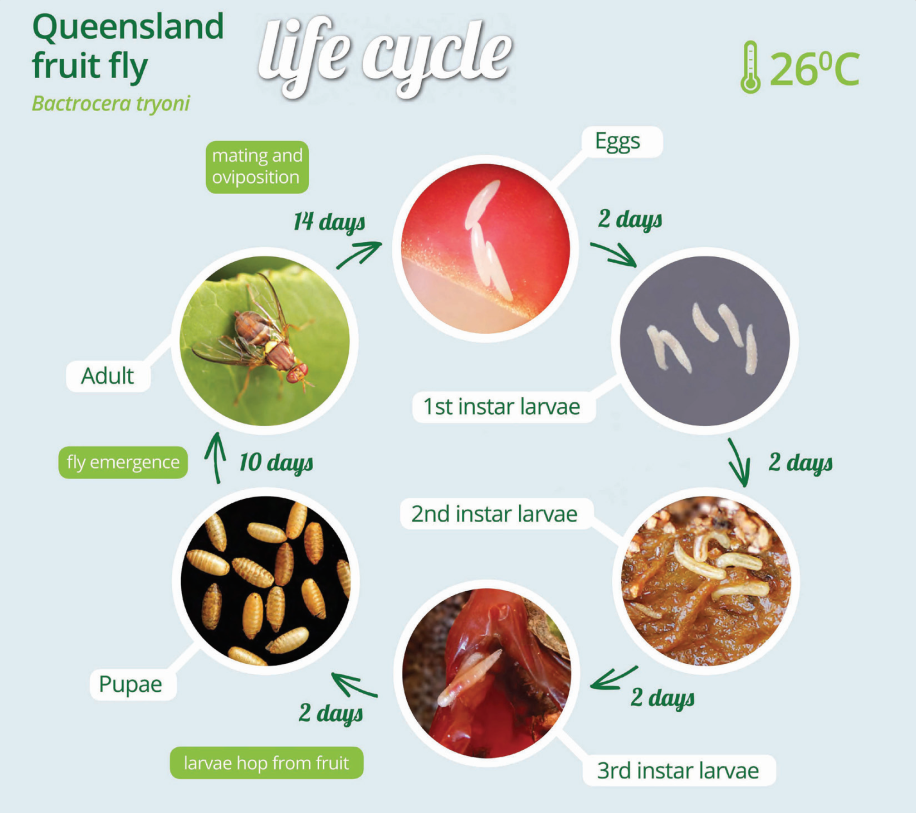FRUIT FLY LIFE CYCLE

Credit: Dr Jenny Ekman, Applied Horticultural Research
Eggs
Female fruit fly puncture host fruit to lay eggs. Eggs are white in colour and banana-shaped. Eggs are generally not detected by gardeners at this stage as the eggs are very small.
Over it’s lifetime, a female fruit fly can have the ability to lay 400 eggs or more.
Larvae
Maggots (Larvae) typically eat towards the centre of the fruit which promotes rot, despite it appearing to be unaffected from the outside.
It will eventually chew its way out of the fruit when fully mature – which by this stage has usually fallen to the ground.
Pupae
The fruit will eventually fall to the ground after ripening and rotting.
The fully matured larvae leave the fallen fruit and burrow into the soil to pupate.
The maggot becomes inactive and changes into an oval, brown, hard pupa.
Adult
The adult fruit fly develops within the pupa and after hatching emerges from the ground. After feeding and mating, females search for suitable ripe fruit to lay their eggs.
The punctures or stings are very small and are not usually recognisable to the untrained eye.
